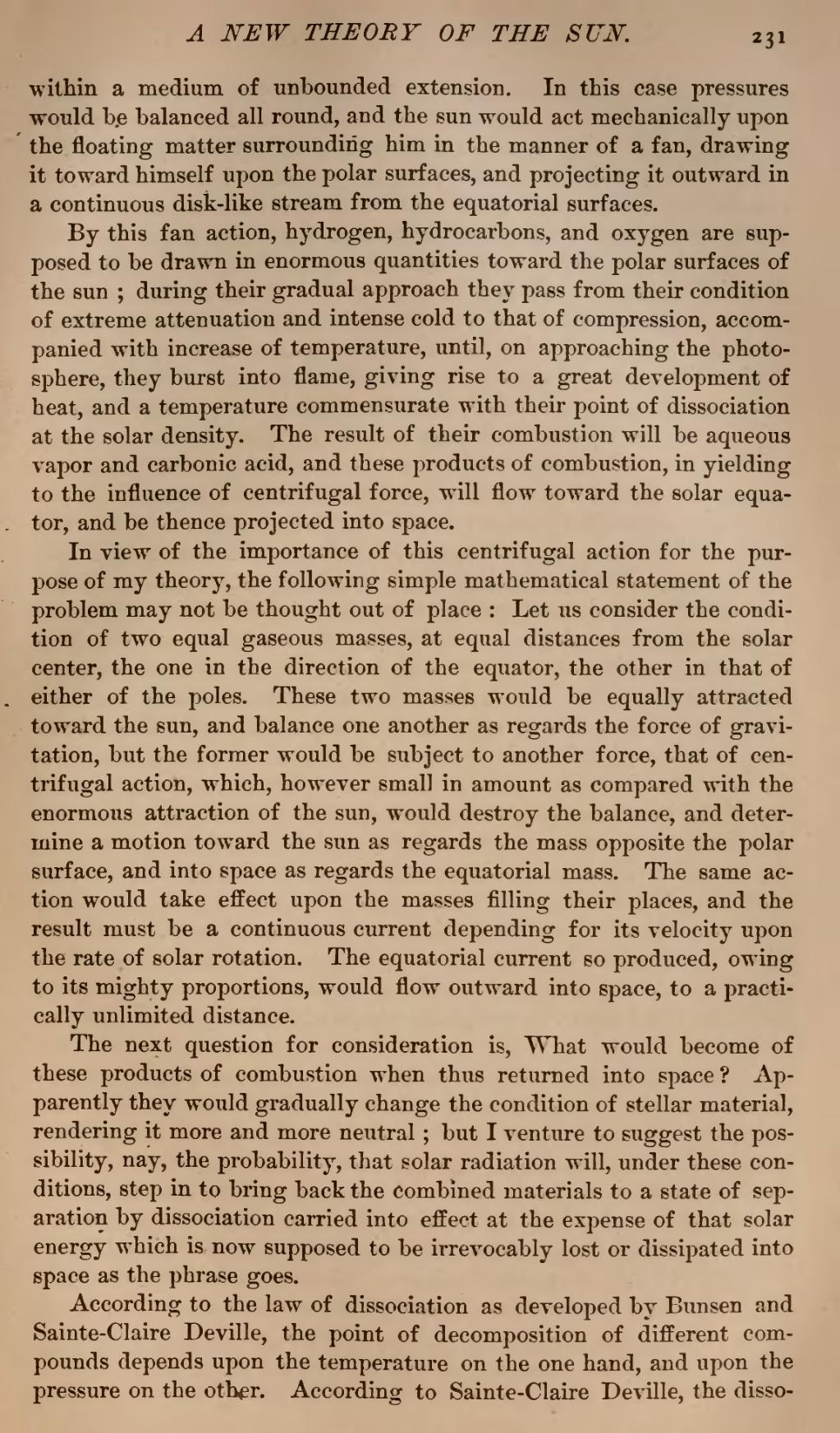within a medium of unbounded extension. In this case pressures would be balanced all round, and the sun would act mechanically upon the floating matter surrounding him in the manner of a fan, drawing it toward himself upon the polar surfaces, and projecting it outward in a continuous disk-like stream from the equatorial surfaces.
By this fan action, hydrogen, hydrocarbons, and oxygen are supposed to be drawn in enormous quantities toward the polar surfaces of the sun; during their gradual approach they pass from their condition of extreme attenuation and intense cold to that of compression, accompanied with increase of temperature, until, on approaching the photo-sphere, they burst into flame, giving rise to a great development of heat, and a temperature commensurate with their point of dissociation at the solar density. The result of their combustion will be aqueous vapor and carbonic acid, and these products of combustion, in yielding to the influence of centrifugal force, will flow toward the solar equator, and be thence projected into space.
In view of the importance of this centrifugal action for the purpose of my theory, the following simple mathematical statement of the problem may not be thought out of place: Let us consider the condition of two equal gaseous masses, at equal distances from the solar center, the one in the direction of the equator, the other in that of either of the poles. These two masses would be equally attracted toward the sun, and balance one another as regards the force of gravitation, but the former would be subject to another force, that of centrifugal action, which, however small in amount as compared with the enormous attraction of the sun, would destroy the balance, and determine a motion toward the sun as regards the mass opposite the polar surface, and into space as regards the equatorial mass. The same action would take effect upon the masses filling their places, and the result must be a continuous current depending for its velocity upon the rate of solar rotation. The equatorial current so produced, owing to its mighty proportions, would flow outward into space, to a practically unlimited distance.
The next question for consideration is, What would become of these products of combustion when thus returned into space? Apparently they would gradually change the condition of stellar material, rendering it more and more neutral; but I venture to suggest the possibility, nay, the probability, that solar radiation will, under these conditions, step in to bring back the combined materials to a state of separation by dissociation carried into effect at the expense of that solar energy which is now supposed to be irrevocably lost or dissipated into space as the phrase goes.
According to the law of dissociation as developed by Bunsen and Sainte-Claire Deville, the point of decomposition of different compounds depends upon the temperature on the one hand, and upon the pressure on the other. According to Sainte-Claire Deville, the disso-

